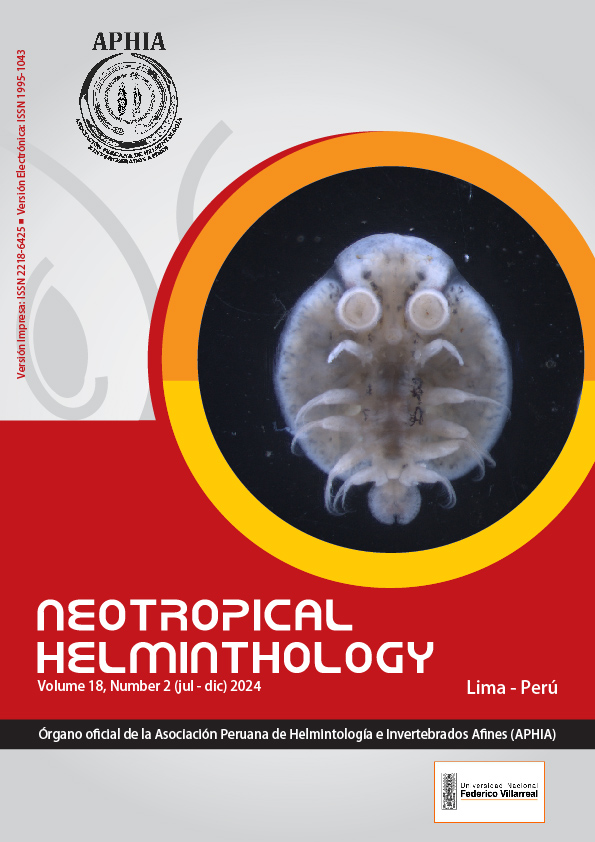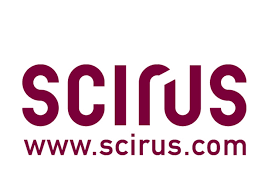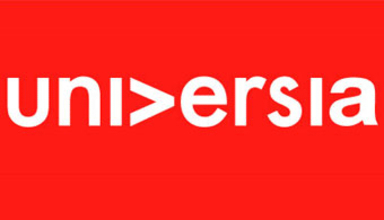Biodiversity of parasites infecting Bothrops erythromelas amaral, 1923 (Squamata, Viperidae): an endemic venomous snake species from the Brazilian Northeast
DOI:
https://doi.org/10.62429/rnh20242181808Keywords:
Acanthocephala, Caatinga, Cestoda, Inventory, Nematoda, ParasitesAbstract
The knowledge of parasitic fauna in wild animals is essential for understanding the ecological conditions that determine the occurrence and prevalence of parasites in their hosts. With the exception of records of one Pentastomida (Cephalobaena tetrapoda Heymons, 1922) and two Nematoda (Physaloptera sp. And Aspiculuris sp.), detailed information about the helminth fauna associated with the jararaca Bothrops erythromelas Amaral, 1923 is lacking. This species has a wide distribution in the Caatinga, with records in marginal areas of the Cerrado and Atlantic Forest. Here, we describe the patterns of richness, abundance, and prevalence of helminths in B. erythromelas, a venomous snake from northeastern Brazil. The parasitized snakes were collected from six Brazilian states in the Northeast region: Bahia, Ceará, Paraíba, Pernambuco, Piauí, and Rio Grande do Norte. We examined the gastrointestinal tract of 127 specimens and found 76 individuals infected with at least one endoparasite, represented by 17 taxa of helminths: two Acanthocephala, three Cestoda, and 12 Nematoda. With our results, knowledge about hidden biodiversity is expanded, particularly as this is a pioneering study regarding the helminth fauna of B. erythromelas. We also describe the occurrence of the species Physaloptera lutzi Cristofaro, Guimarães & Rodrigues, 1976 and Parapharyngodon hispidus Ferreita et al., 2021 for the first time in snakes.
Downloads
Published
How to Cite
Issue
Section
License

This work is licensed under a Creative Commons Attribution-NonCommercial-NoDerivatives 4.0 International License.
OBJETO: El AUTOR-CEDENTE transfiere de manera TOTAL Y SIN LIMITACIÓN alguna al CESIONARIO los derechos patrimoniales que le corresponden sobre la (s) obra(s) tituladas: xxxxxxxxxxxxxxxx, por el tiempo que establezca la ley internacional. En virtud de lo anterior, se entiende que el CESIONARIO adquiere el derecho de reproducción en todas sus modalidades, incluso para inclusión audiovisual; el derecho de transformación o adaptación, comunicación pública, traducción, distribución y, en general, cualquier tipo de explotación que de las obras se pueda realizar por cualquier medio conocido o por conocer en el territorio nacional o internacional.
REMUNERACIÓN: La cesión de los derechos patrimoniales de autor que mediante este contrato se hace será a título gratuito.
CONDICIONES Y LEGITIMIDAD DE LOS DERECHOS: El AUTOR-CEDENTE garantiza que es propietario integral de los derechos de explotación de la(s) obra(s) y en consecuencia garantiza que puede contratar y transferir los derechos aquí cedidos sin ningún tipo de limitación por no tener ningún tipo de gravamen, limitación o disposición. En todo caso, responderá por cualquier reclamo que en materia de derecho de autor se pueda presentar, exonerando de cualquier responsabilidad al CESIONARIO.
LICENCIA DE ACCESO ABIERTO: El AUTOR-CEDENTE autoriza que manuscrito publicado en La Revista Neotropical Helminthology permanece disponible para su consulta pública en el sitio web https://www.neotropicalhelminthology.com/ y en los diferentes sistemas de indexación y bases de datos en las que la revista tiene visibilidad, bajo la licencia Creative Commons, en la modalidad Reconocimiento-No comercial- Sin Trabajos derivados –aprobada en Perú, y por lo tanto son de acceso abierto. De ahí que los autores dan, sin derecho a retribución económica, a la Asociación Peruana de Helmintología e Invertebrados Afines (APHIA), los derechos de autor para la edición y reproducción a través de diferentes medios de difusión.


 Numero 2 Volumen 19 - 2025 (versión Anticipada)
Numero 2 Volumen 19 - 2025 (versión Anticipada)














































